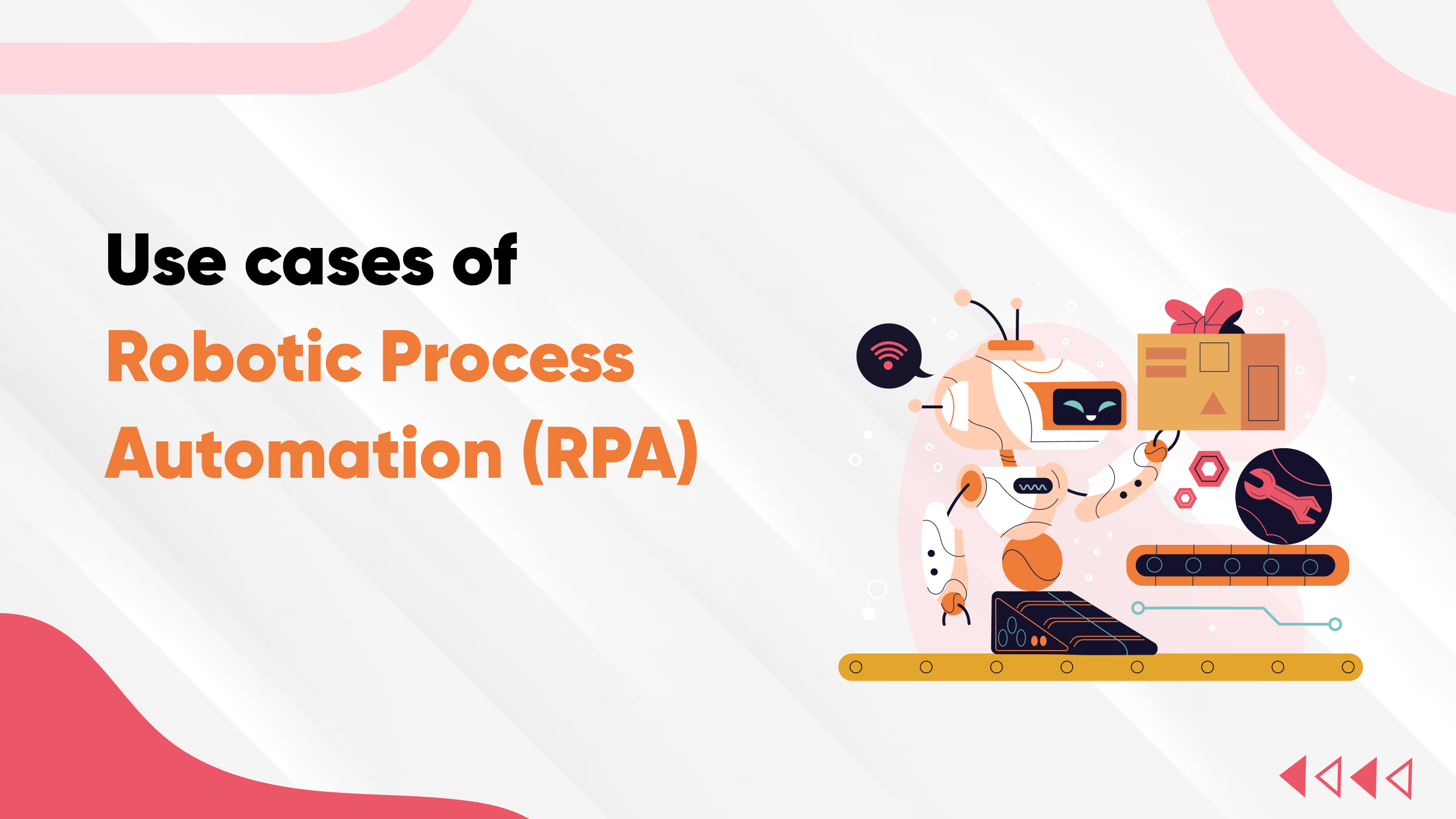Picture this: You’re running a company, and every day, your team spends countless hours on repetitive, mundane tasks that drain productivity. Sound familiar? You’re not alone. Almost every company without robotic process automation faces the same issue.
In fact, studies show that employees spend up to 22% of their time on repetitive tasks that could be automated. That’s valuable time wasted on monotonous activities instead of driving growth and fostering creativity.
But what if there was a game-changing solution that could transform the way you do business? Enter Robotic Process Automation (RPA) – the cutting-edge technology that’s shaking up industries worldwide.
With RPA, you can:
- Automate manual processes,
- Eliminate errors, and
- Accelerate workflows like never before.
It’s like having a team of tireless robots at your disposal, tirelessly handling repetitive tasks while your human employees focus on high-value work.
In this article, we’ll explore the transformative power of RPA, uncover use cases, and reveal why the robotic process automation future is poised to revolutionize the way businesses operate. Let’s dive in and discover the endless possibilities of Robotic Process Automation.
Understanding Robotic Process Automation (RPA)

Demystifying Robotic Process Automation (RPA)
Robotic Process Automation (RPA) is not about humanoid robots taking over your office space; it’s about leveraging software robots to:
- Automate repetitive,
- Rule-based tasks, and
- Mimic human actions within digital systems.
Think of it as your digital workforce – tirelessly executing tasks with precision and efficiency, 24/7, without the need for breaks or rest.
At its core, RPA works by using bots to interact with existing software applications, just like a human user would. These bots can perform a wide range of activities, from data entry and file manipulation to responding to emails and generating reports.
Moreover, one of the key components of RPA is its user-friendly interface. This allows users to design, deploy, and manage automation workflows with ease.
No coding skills? No problem. Many RPA platforms offer drag-and-drop functionality. However, even with that, the robotic process automation implementation is indeed a tough task.

Hence, to integrate RPA effectively, assembling a team of skilled IT professionals is essential. For remote IT staffing solutions, consider reaching out to Insnapsys, a renowned IT staffing firm recognized for providing top-notch developer talent.
What are the Benefits of Robotic Process Automation RPA

The Future Landscape of Robotic Process Automation
Robotic Process Automation (RPA) isn’t just a fancy buzzword; it’s a powerful tool that offers a myriad of benefits. Let’s explore some of the key advantages of implementing RPA:
-
Cost Savings
By automating repetitive tasks previously performed by humans, RPA significantly reduces operational costs. Moreover, with bots handling routine activities around the clock, organizations can achieve cost savings of up to 20% to 30% per year.
Furthermore, it eliminates human errors which are used to increase the overall cost. Studies show that The error rates attributed to manual data entry by humans typically vary between 1% and 5%.
-
Increased Efficiency
RPA streamlines workflows and eliminates manual errors. This results in faster processing times and improved accuracy. Additionally, tasks that once took hours or days to complete can now be executed in minutes. Thus, this allows employees to focus on more value-added activities.
-
Scalability
RPA is highly scalable, allowing organizations to easily adapt to changing business needs and workload fluctuations. Whether you’re a small startup or a large enterprise, RPA can scale up or down to meet your requirements. That too without the need for additional infrastructure or resources.
-
Enhanced Compliance
Compliance with regulations and standards is critical for businesses in highly regulated industries such as finance, healthcare, and manufacturing. RPA ensures adherence to compliance requirements by consistently following predefined rules and procedures. As a result, this reduces the risk of costly penalties or audits.
-
Data Accuracy and Insights
Robotic process automation ensures data accuracy by minimizing human error and maintaining consistent data quality across systems. Moreover, by automating data collection and analysis, RPA enables organizations to derive valuable insights from large datasets. Thus, this facilitates informed decision-making.
-
Competitive Advantage
In today’s hypercompetitive business landscape, organizations that embrace RPA gain a significant competitive advantage. By accelerating processes, reducing costs, and improving efficiency, RPA enables companies to stay ahead of the curve and drive innovation in their respective industries.
Use cases of Robotic Process Automation (RPA)

Unlocking Efficiency: Real-World Applications of Robotic Process Automation (RPA)
Robotic Process Automation (RPA) has rapidly gained traction across various industries, revolutionizing the way organizations approach business processes. Let’s delve into some specific robotic process automation services in key sectors:
-
Robotic Process Automation in Finance
In the finance sector, RPA is deployed to automate a wide range of repetitive tasks, including:
- Invoice Processing: RPA bots can extract data from invoices, verify accuracy, and initiate payment processing. As a result, this reduces manual effort and minimizes errors.
- Account Reconciliation: Additionally, RPA automates the reconciliation process by comparing transactions across multiple systems, and flagging exceptions for further review.
- Financial Reporting: Furthermore, RPA streamlines the generation of financial reports. It does so by aggregating data from disparate sources, performing calculations, and formatting reports according to predefined templates.
-
Robotic Process Automation in Banking
Banks leverage RPA to enhance operational efficiency and customer service, with use cases such as:
- Customer Onboarding: RPA accelerates the onboarding process by automating document verification, KYC (Know Your Customer) checks, and account setup. Therefore, this leads to faster account openings and improved customer experience.
- Loan Processing: RPA also automates loan application processing, from data collection and validation to credit scoring and approval. As a result, processing times are reduced, and increased loan throughput.
- Fraud Detection and Prevention: Finally, RPA bots continuously monitor transactions for suspicious activities, flagging potential frauds in real-time and cybersecurity alerts for investigation.
-
Robotic Process Automation Accounting
In the realm of accounting, RPA is applied to streamline workflows and enhance accuracy in tasks such as:
- Accounts Payable/Receivable: RPA automates the processing of invoices, purchase orders, and payment receipts. This ensures timely payments and improves cash flow management.
- General Ledger Reconciliation: Moreover, RPA bots reconcile transactions between the general ledger and subsidiary ledgers, facilitating faster monthly close processes.
- Expense Management: RPA automates expense report processing, from receipt scanning and data extraction to reimbursement approval. As a result, this reduces manual effort and speeds up reimbursement cycles.
-
Robotic Process Automation in Insurance
Insurance companies leverage RPA to optimize claims processing, policy administration, and customer service, including:
- Claims Processing: RPA accelerates claims processing by automating data entry, claims validation, and settlement calculations. Thus, leading to faster claims resolution and improved customer satisfaction.
- Underwriting Support: Additionally, RPA bots assist underwriters by automating risk assessments, policy generation, and documentation. This enables faster turnaround times and enhanced underwriting accuracy.
- Customer Support: RPA enhances customer support operations by automating responses to common inquiries, and updating customer records. As a result, this leads to quicker resolution of customer issues and inquiries.
Robotic Process Automation Future

The Future Landscape of Robotic Process Automation
As we peer into the future of RPA, one thing becomes abundantly clear – its potential for innovation and transformation knows no bounds. Here’s a glimpse of what lies ahead:
- Intelligent Automation:
The future of RPA lies in combining automation with artificial intelligence (AI) and machine learning (ML) capabilities to create intelligent automation solutions. These advanced systems will not only automate repetitive tasks but also adapt, learn, and make intelligent decisions based on data and user interactions.
- Hyperautomation:
Hyperautomation, the concept of automating as many processes as possible using a combination of RPA, AI, ML, and other technologies, will become the new norm. Organizations will adopt end-to-end automation strategies to optimize workflows, drive efficiency, and stay competitive in the digital age.
- Autonomous Bots:
Bots will become increasingly autonomous, capable of self-learning, self-healing, and self-optimizing. These autonomous bots will proactively identify opportunities for automation, suggest process improvements, and adapt to changing business requirements without human intervention.
Also Read: Remote Recruiting Tools and Technologies Driving Efficiency
Conclusion:
In conclusion, Robotic Process Automation (RPA) stands poised at the forefront of a transformative revolution in the world of business operations.
With its ability to automate repetitive tasks, drive efficiency, and unleash untapped potential, RPA is not just a technology but a catalyst for innovation and growth.
As we move forward in the robotic process automation future, organizations that embrace RPA will gain a competitive edge, and unlock new opportunities for success. However, the true power of RPA lies not just in its technological capabilities but in its ability to empower human workers, foster collaboration, and drive meaningful change.
For your RPA needs, consider contacting Insnapsys to enlist remote IT professionals who are adept at handling automation requirements with expertise.
FAQs
-
How does robotic process automation work?
RPA uses software robots to automate repetitive tasks by mimicking human actions on digital systems. These robots follow predefined rules and workflows to perform tasks like data entry, and email responses without human intervention.
-
How to use robotic process automation
Using RPA involves identifying repetitive tasks in your workflow, designing automation workflows using RPA software, and deploying software robots to execute these tasks.
-
Why robotic process automation is important
RPA is important because it frees up human workers from mundane tasks. Thus, allowing them to focus on higher-value activities. Moreover, it enhances operational efficiency, reduces costs, and accelerates workflows.
-
How to build robotic process automation?
Building RPA involves selecting a suitable RPA platform, defining automation goals, mapping out process workflows, designing automation scripts or bots, testing the automation solution, and deploying it into production.
Alternatively, you have the option to enlist a team of IT experts to manage your RPA requirements. Insnapsys is your trusted destination for this purpose.
-
What is the future of business process automation (BPA)?
The future of BPA is bright and transformative, driven by several key trends:
- AI and ML Integration: AI and ML will enable smarter, adaptive automation capable of handling complex tasks.
- Expansion of RPA: RPA will automate a wider range of processes, especially when combined with AI for hyperautomation.
- IoT Utilization: IoT will provide real-time data to dynamically automate and optimize processes.
- Cloud-Based Solutions: Cloud computing will offer scalable, flexible, and cost-effective BPA solutions.
- Focus on User Experience: BPA will enhance user experience and employee satisfaction by automating repetitive tasks.
-
How does business process automation enhance IT operations?
Business process automation (BPA) enhances IT operations by:
- Improving Efficiency: Automates repetitive tasks, reducing manual effort and errors.
- Boosting Productivity: Frees up IT staff to focus on strategic projects and innovation.
- Enhancing Accuracy: Minimizes human errors in processes like data entry and system monitoring.
- Accelerating Response Times: Provides real-time monitoring and automated responses to IT issues.
- Ensuring Consistency: Standardizes processes, ensuring consistent and reliable IT operations.
-
How will AI impact the future of Business Process Automation?
Artificial Intelligence (AI) will play a pivotal role in the future of BPA by enabling more intelligent automation. AI can learn from data, make decisions, and adapt to new situations, allowing for more complex and cognitive tasks to be automated.








